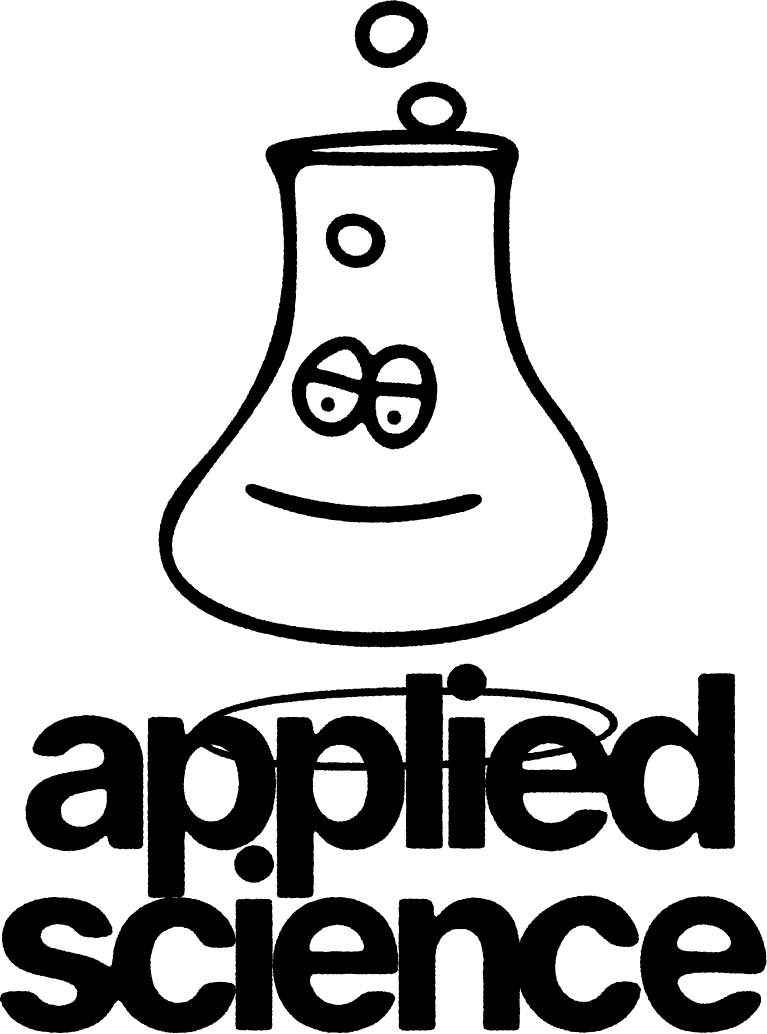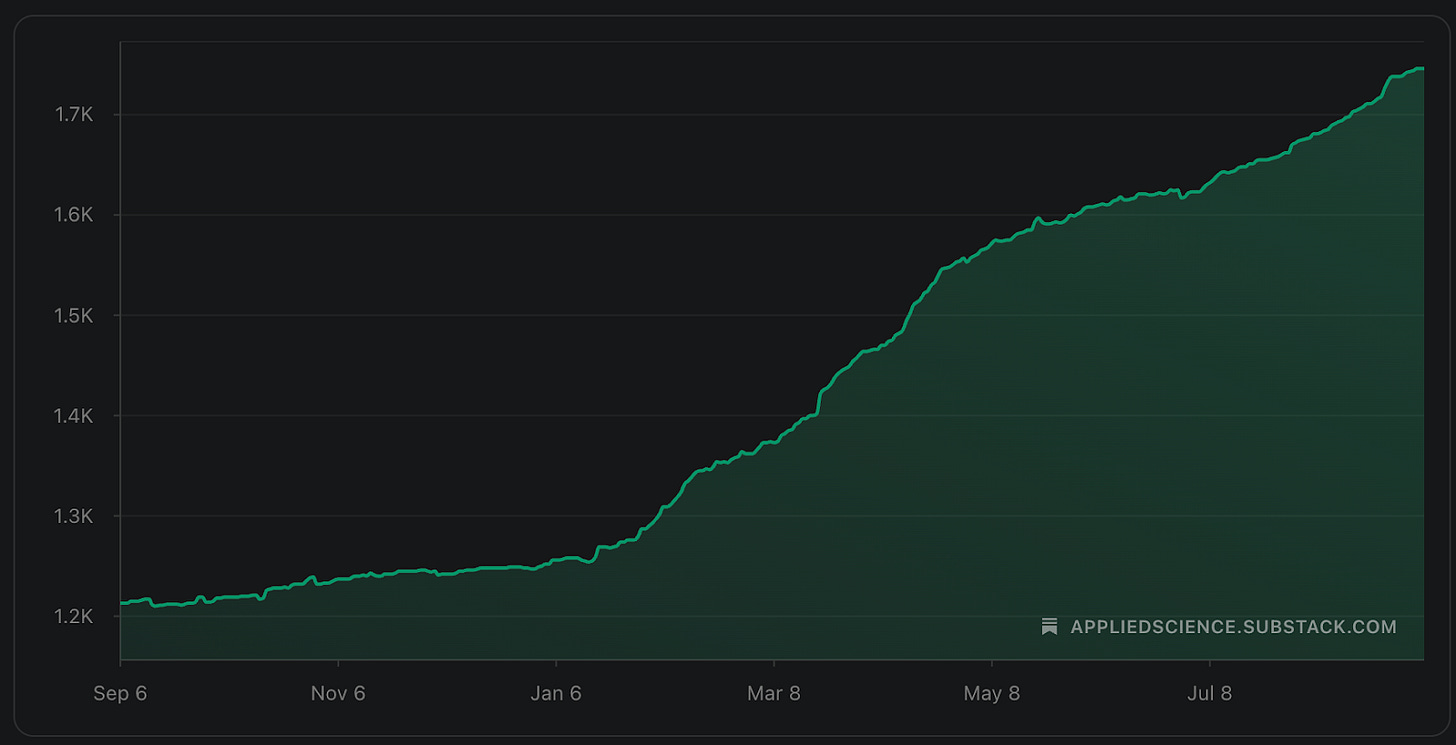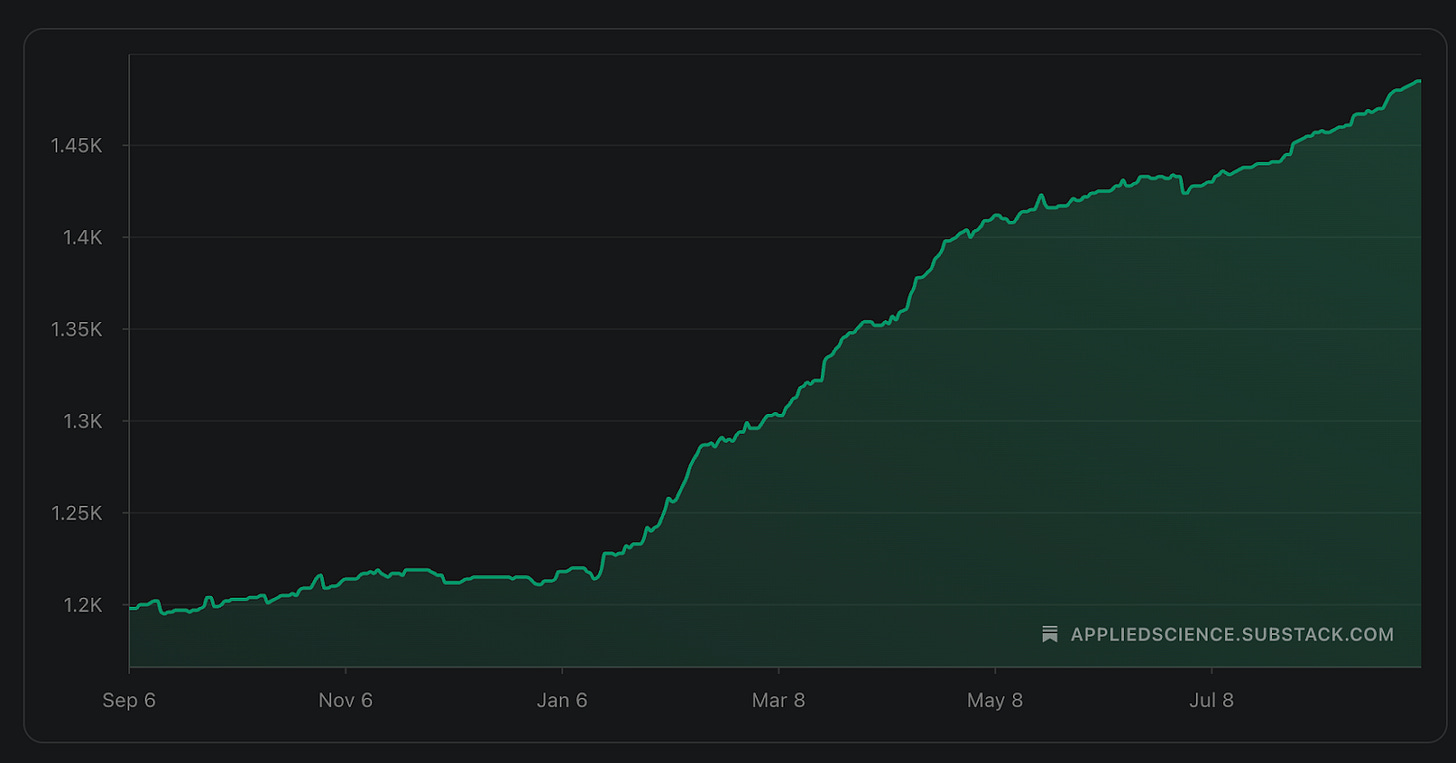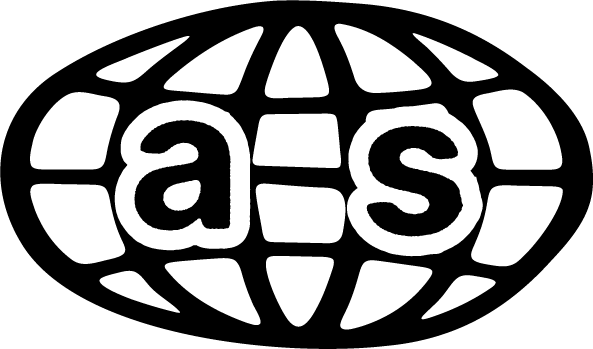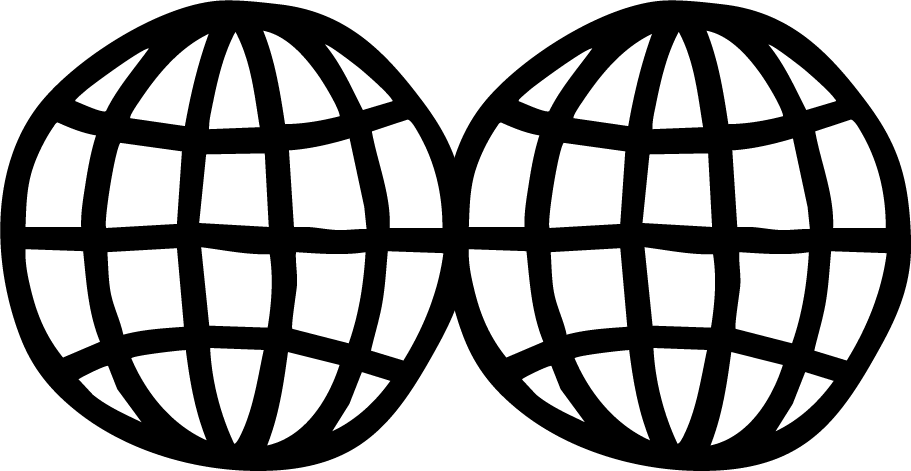Applied Science: Lessons From a Half Year of Podcasting
At the beginning of 2025, I launched Where Do We Go From Here?, a podcast series in which I attempt to chart a better course for culture, media, and company creation by asking questions of really smart folks. I took this on in the midst of trying to breathe life into this fledgling newsletter more broadly, while also holding down my actual job (music manager guy), writing a novel (assuredly a bad idea), and decamping to London for the summer with my wife and three year old (a wonderful experience that turned my schedule on its head). As a result, it’s been hard to stay consistent. I lapsed in recording in May.
Where Do We Go From Here? relaunches next week. As I scheduled more interviews, rebranded the site (courtesy of the amazing Hugh Huntingford), and continued thinking through how to make this series the best it can be, I reflected a bit on the experience. Below, I share some broad thoughts about the act itself, as well as some of my favorite bits of wisdom from the first twelve conversations.
Where Do We Go From Here? will resume on 10/2/2025 and publish biweekly for as long as I can hold myself to that schedule.
Try shit. When I started recording the podcast, I couldn’t help but make fun of myself. I’d tell people I was providing exactly what the world needed: Another white guy pontificating about stuff for hours at a time. Knowing how crowded the world of content is, I still ventured to carve my own corner. I recorded. I posted. I sheepishly shared and reached out to more folks to have them on as guests. If you don’t try something new, a little scary, and perhaps a little silly, you’ll never get anywhere good. I learned a lot through my conversations, gaining insights on ideas and adding new dimension to the relationships I had with the people I invited on.
It’s hard being consistent. Perhaps this goes without saying, but man…reaching out to prospective guests, recording episodes, editing episodes, writing up context for episodes, and posting episodes is time consuming work that naturally pulls the creator away from other focal points. It’s tiring. Promotion is hard and I am not inherently great at it. It’s very easy to not secure a guest and then let things lapse for a few weeks while you “recharge.” So my hat is off to people that record and release high quality work with limited budgets or no budgets at all.
Audio actually does drive growth. So does consistency. This is partially a Substack-specific thought, but I am sure it is true across different platforms. Here is a graph of my subscriber growth and follower growth from the beginning of 2025 to the present:
I started publishing WDWGFH on January 14. I’ve gained nearly 500 followers and 268 new subscribers. In absolute terms, not huge numbers. In relative terms, a 28% increase in followers and 18% increase in subscribers. New followers and subscriptions rose when I published, slowed when I stopped. While I certainly wouldn’t want to predict this trend continuing into the future, it speaks to the ways in which current consumption models seem to prioritize audio. In my own practice, I am not quite sure what to make of this fact. If the goal is growth pure and simple, the answer is clear. That’s never been my sole intent with Applied Science. This newsletter is a kind of longform sketchbook, a chimeric attempt to work out my thoughts and concerns on the page. I am a writer before I am any other category of creative person. To know empirically that writing (or at least my last six years of writing) doesn’t drive growth as efficiently as audio is, admittedly, a bit jarring. Fortunately, I also love to talk.
It’s fun being social. Regardless how insightful some of the conversations may or may not be for the listener, each of them was a great deal of fun for me to conduct. While so much of our world is intermediated by screens and strange digital buffers, sometimes technology can bring you together with people you don’t normally talk to or wouldn’t get to interact with otherwise. As a reminder, loneliness is one of the biggest killers. Reach out and talk to someone!
Cherish the audience you do have. I feel grateful that the first twelve episodes of Where Do We Go From Here gained enough of an audience to foment texts from friends and folks I never imagined were listening, the occasional random commenter who’d gone deep into an episode, and more new subscribers than I imagined I would have gained. I am still a small fish in the big, putrid pond of podcasting, but I am thrilled with what audience I have built and hope to keep feeding it something of value, whatever that means to whomever is listening.
Highlights from the first twelve episodes (or at least my favorite stuff):
Zandria Robinson shouting out the indomitable spirit of Memphis hip-hop and the inventiveness of Black Memphians more broadly. A reminder that necessity of material condition so often breeds creation in ways that can scarcely be measured or fully explained. In a word, magic. (episode 4).
The power of community. An overarching theme of community and gathering of like minds that permeates the thinking of a really diverse range of guests from Congressman Max Frost (episode 8), Metalabel/Kickstarter founder and writer Yancey Strickler (episode 5), and Zandria Robinson, a professor and writer. Community as a tool of autonomy drives people like Mars Today (episode 9), who started a nonprofit record label rooted in the very idea of bringing like minds together, and animates companies like Indify, the market place for independent artists co-founded by singer prettyboyshav (episode 10).
Value in art will always be a slippery concept. My inaugural episode with Tony Lashley touched on it in very technical terms, as did my conversation with Yancey. Mars and I spoke about value (and related values) in a completely different form in our conversation. Daouda Leonard (episode 6) and I spoke about value in very literal terms, thinking about the many ways technology has been used to obfuscate value for artists and can now help fix historic imbalances. No matter how much we love art and dedicate ourselves to artistic practice, questions of value will always loom large and shift shapes for anyone building a career from creative quicksand.
If you have a story to tell, don’t give up until you find a way to tell it. No matter the time it takes, no matter the evolutions of media formats, no matter if you think an audience exists or not. Both Jeff and Eric Rosenthal (episode 11) and Yoh Phillips & Holland Gallagher (episode 7) touch on this notion in various ways throughout our conversations, the former detailing their journey from hip-hop loving YouTube comedians to award winning hip-hop documentarians, the latter charting a related path from self taught journalism and filmmaking to acclaimed long form documentary funding and production.
Corporate structures might save us…but they probably won’t. In my conversation with Reyna Bryan and Tim Anderson of Good Neighbor (episode 3), we went deep on the notion that corporate responsibility and mission-oriented for-profit organizations may be our best hope to fix global issues at a time when governments seem to be faltering and failing their citizens. Mars and I picked apart this idea in particular as we unpacked his desire to build a nonprofit record label that funneled all proceeds to its artists. Yancey hinted at the A-Corp, a legal structure he crafted with artists and collaborators in mind, during our episode, pointing to ways in which corporate arrangements can foster communal economics. At the same time, much of the friction and revelation in my conversation with Yancey arose from his pushed back on my notion of corporate responsibility.



